- Joined
- Jan 6, 2013
- Messages
- 5,574
- Reaction score
- 11,213
1. The History
Easton on the Hill is a village situated at the north eastern tip of North Northamptonshire. The ironstone quarry, due north of the village, started up in 1873 under the ownership of the Chesterfield-based company, Wingerworth Iron co. The quarry was then re-worked by R.Eldred and Son in 1892, and the Marquess of Exeter in 1902. From 1913, it was subsequently operated by North Lincolnshire Iron Co Ltd (active from 1907-1983) until its closure in 1922.
As the quarry grew in size, it became a large local employer. A steam engine on 3ft gauge track was employed to move the stone around the quarry itself. The stone was then transferred to a 1-in-13 self-acting rope-worked incline that headed due north down to the ‘Tippler’ located just south of the main railway line operated by Midland Railways between Stamford and Oakham. The ironstone then continued its onward journey via rail so the stone could be smelted for iron. Apparently, the last quarry loco on the site was an 0-4-0ST built by Hudswell Clarke (Wks No 1106 of 1915) named UTHIE.
Today the quarry has been landscaped but relics from the incline railway remain. At the quarry end, a single-track engine shed and the 5ft 8in Diameter Horizontal winding drum with brake mechanism and operating/control wheel remain. The brick-lined cutting can also be traced into the overgrown cutting just south of the engine shed. At the bottom end of the incline, the double hopper Tippler system is complete along with the remains of a small weighbridge. The route of the incline can be traced south for the duration of Home Wood, after which its course has been lost to the landscaped fields.
2. The Explore
Nice related explore this. First reported by @BikinGlynn last year. Nothing spectacular but something of interest to the industrial archaeologists. The engine shed visible from the footpath to the east has its roof on, appears to have been converted to a chicken shed and isn’t that interesting. However, the winding drum and brake mechanism makes up for this. At the bottom end the Tippler system also makes the trip here worthwhile.
3. The Pictures
The single-track engine shed from the public footpath:
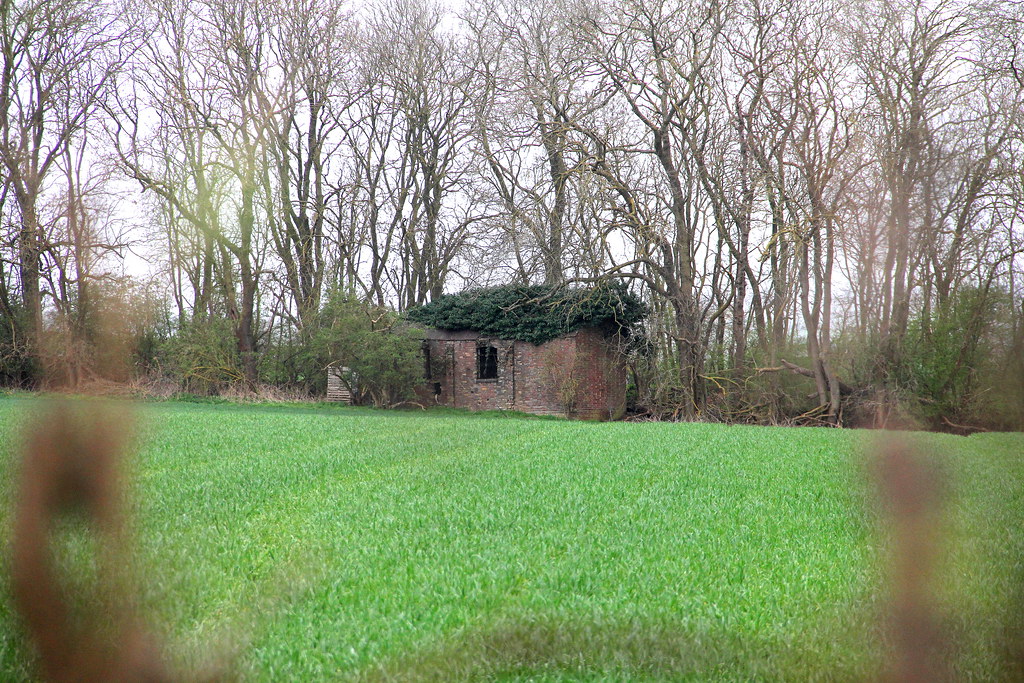 img0268 by HughieDW, on Flickr
img0268 by HughieDW, on Flickr
Structurally it isn’t looking too healthy!
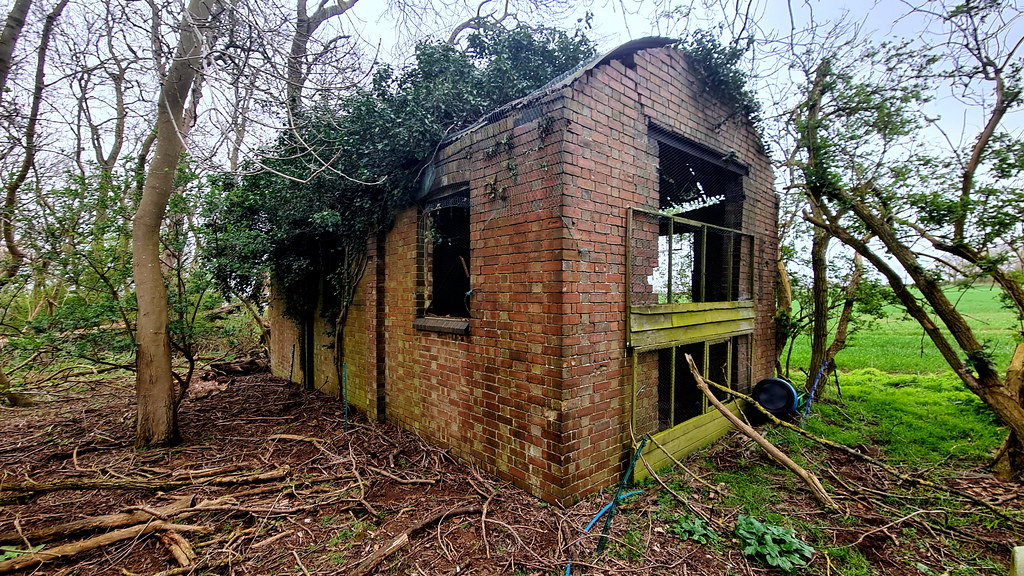 Easton 02 by HughieDW, on Flickr
Easton 02 by HughieDW, on Flickr
And inside is pretty bare:
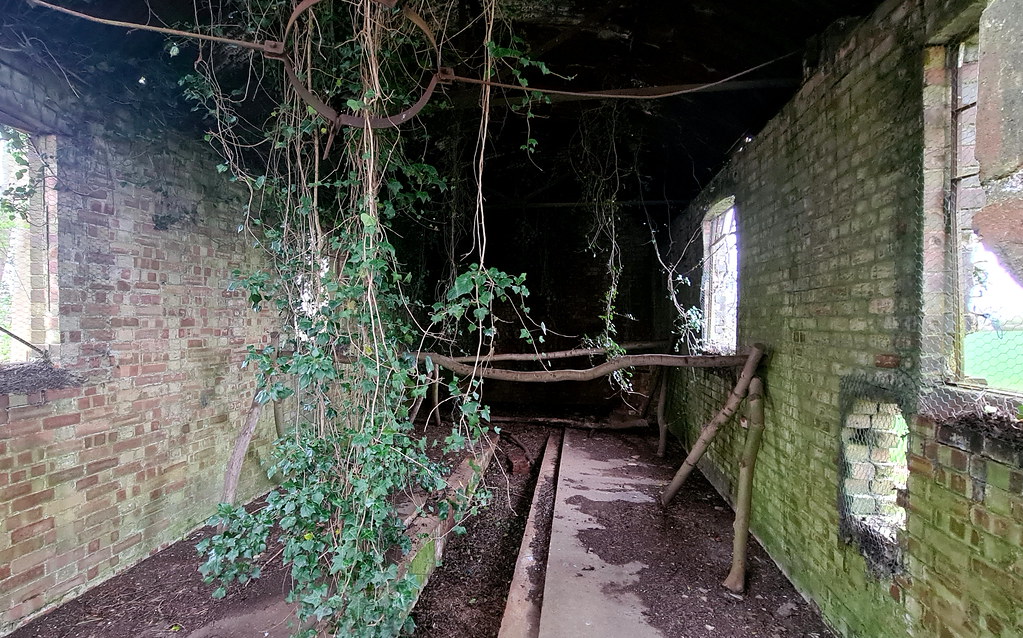 Easton 01 by HughieDW, on Flickr
Easton 01 by HughieDW, on Flickr
But the winding drum is what were here for:
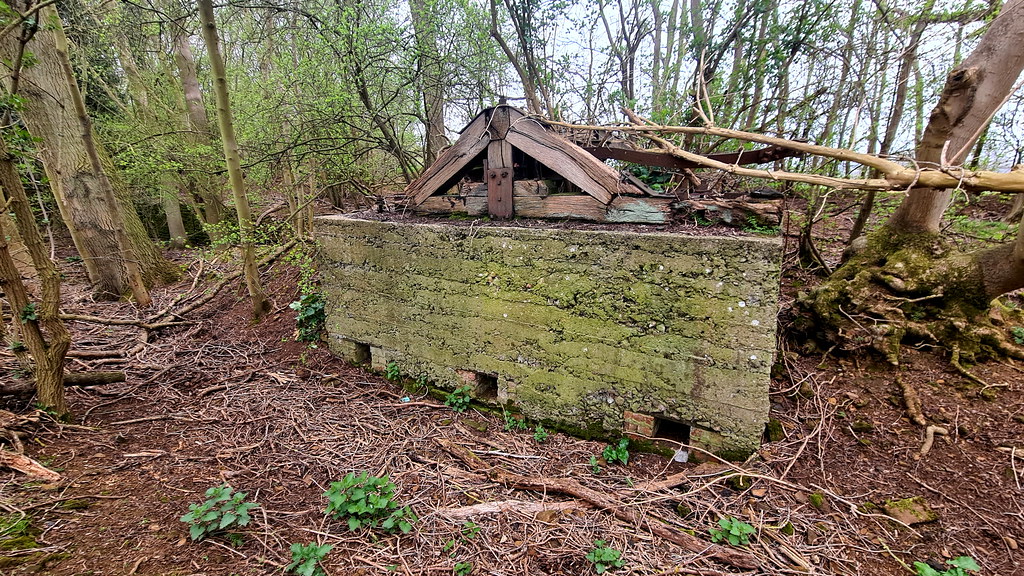 Easton 03 by HughieDW, on Flickr
Easton 03 by HughieDW, on Flickr
Built on a concrete base:
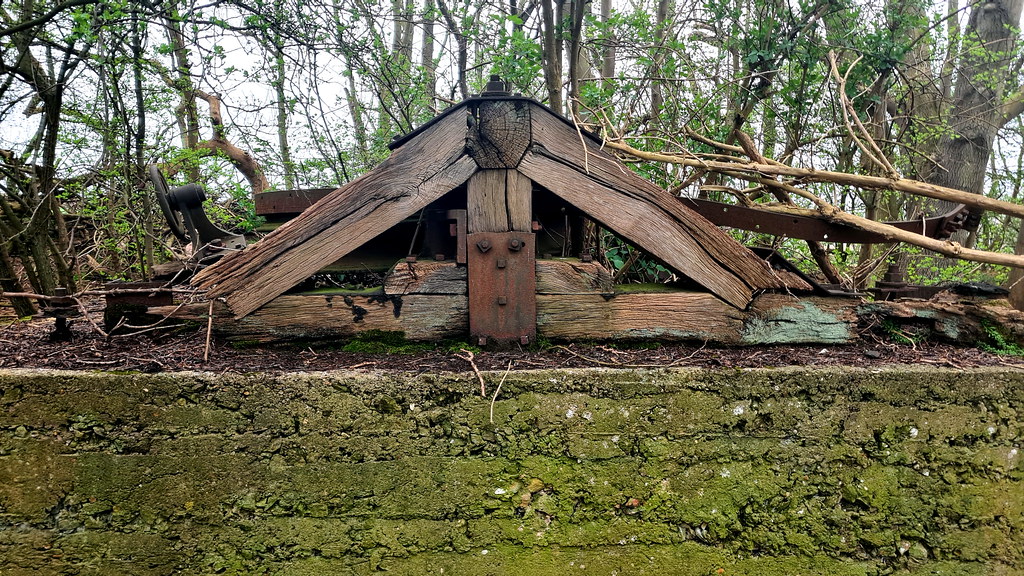 Easton 04 by HughieDW, on Flickr
Easton 04 by HughieDW, on Flickr
It’s got the brake wheel:
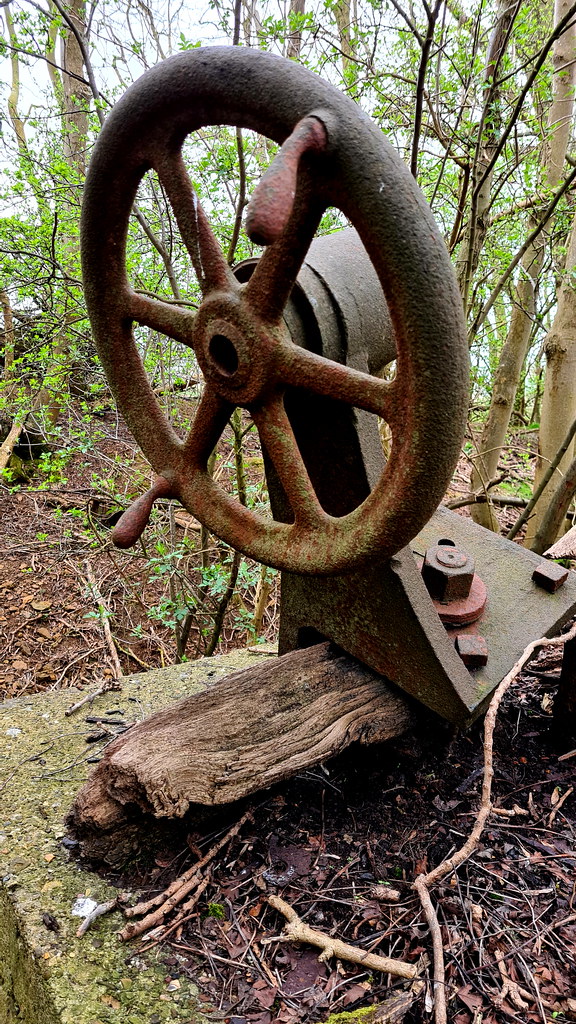 Easton 10 by HughieDW, on Flickr
Easton 10 by HughieDW, on Flickr
And pretty much everything else intact:
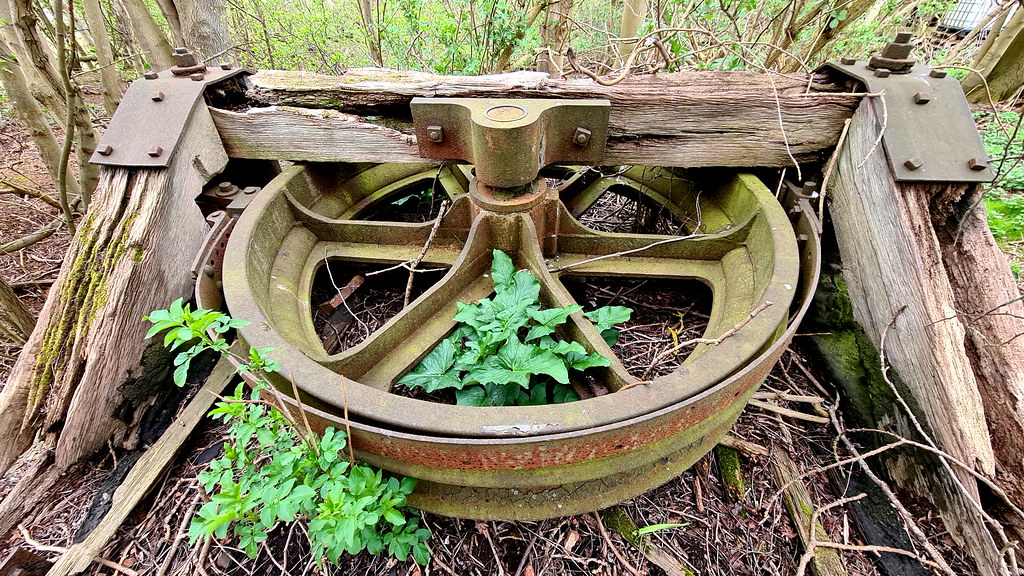 Easton 11 by HughieDW, on Flickr
Easton 11 by HughieDW, on Flickr
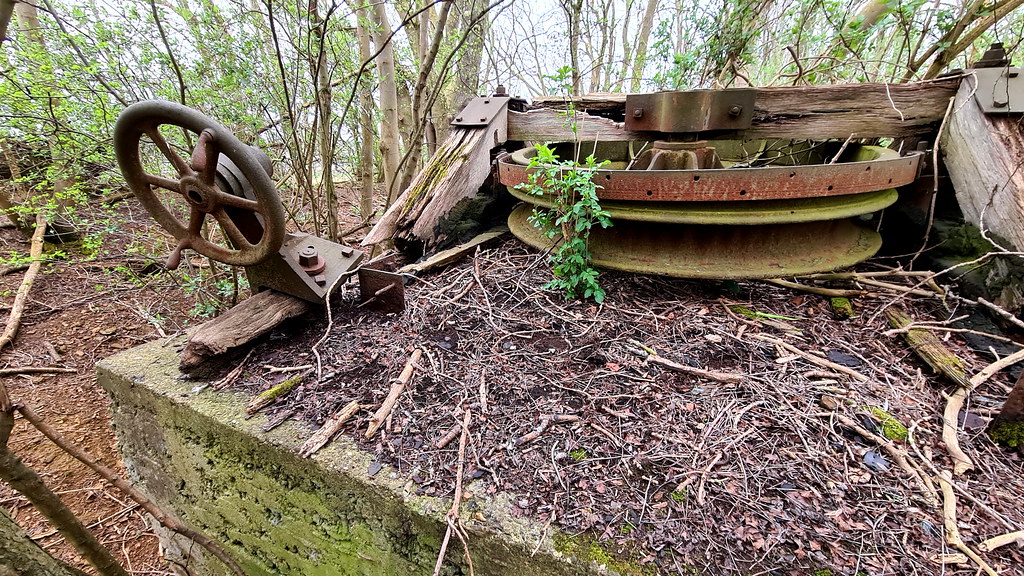 Easton 09 by HughieDW, on Flickr
Easton 09 by HughieDW, on Flickr
A couple of pictures of the stone-lined cutting that led up to the quarry:
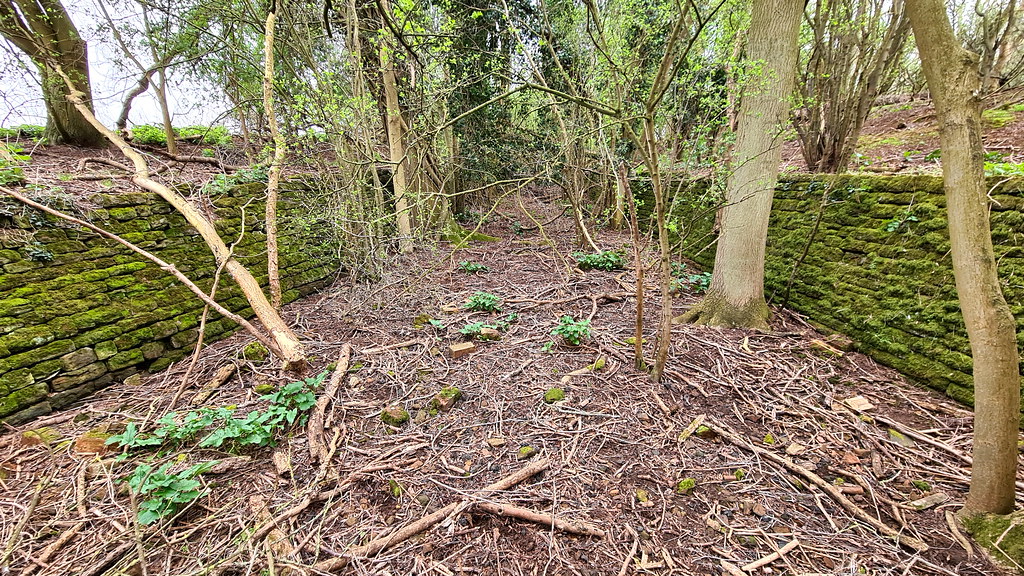 Easton 05 by HughieDW, on Flickr
Easton 05 by HughieDW, on Flickr
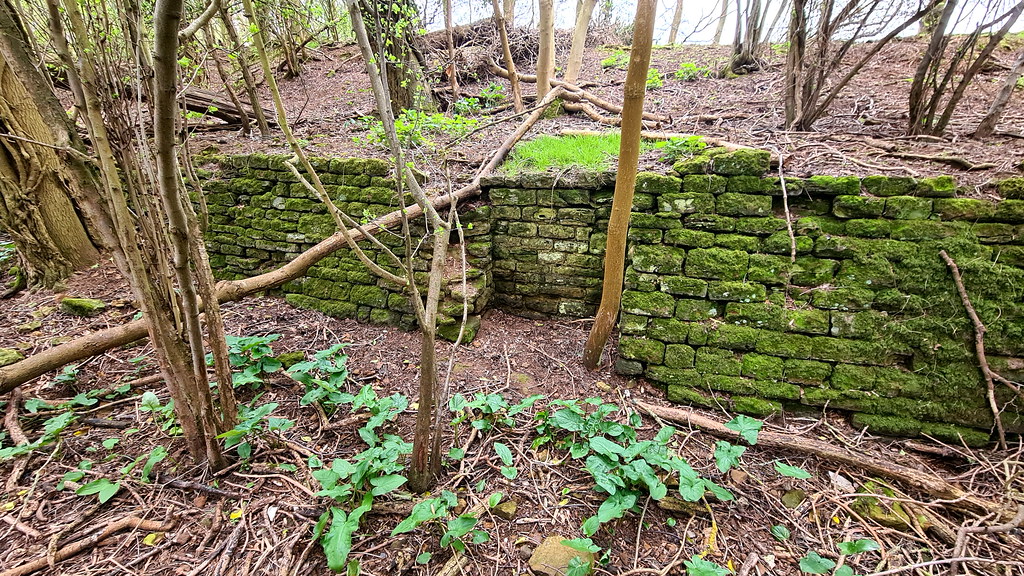 Easton 06 by HughieDW, on Flickr
Easton 06 by HughieDW, on Flickr
It’s then back on to the footpath, further on down the hill and across to the Tippler system:
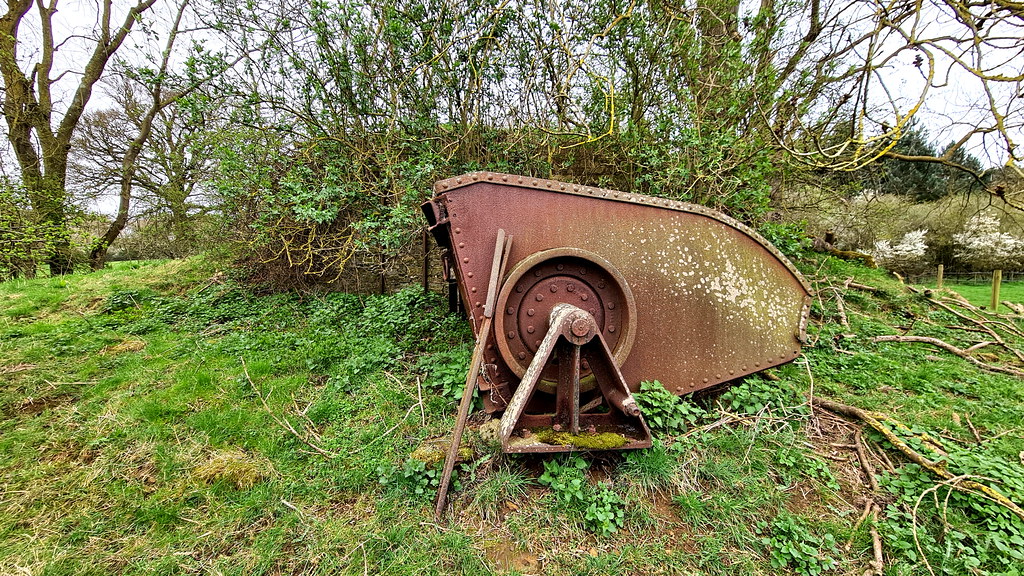 Easton 20 by HughieDW, on Flickr
Easton 20 by HughieDW, on Flickr
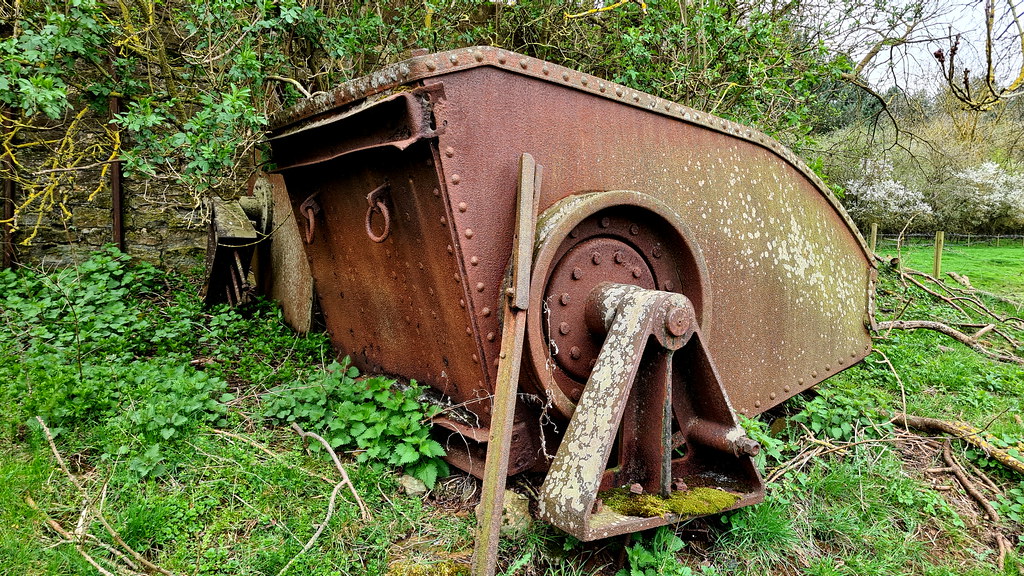 Easton 14 by HughieDW, on Flickr
Easton 14 by HughieDW, on Flickr
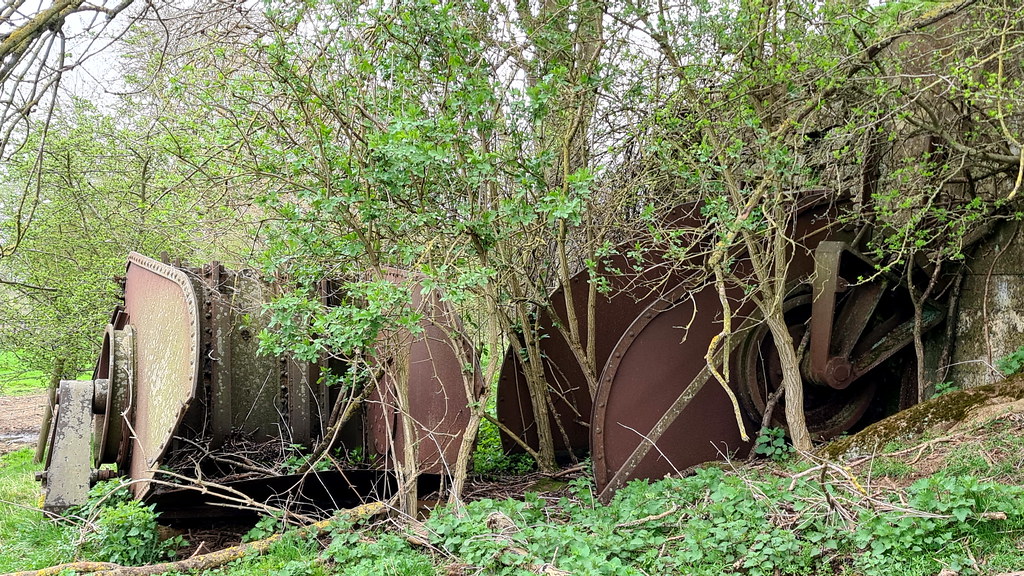 Easton 17 by HughieDW, on Flickr
Easton 17 by HughieDW, on Flickr
Inside one of the double hoppers:
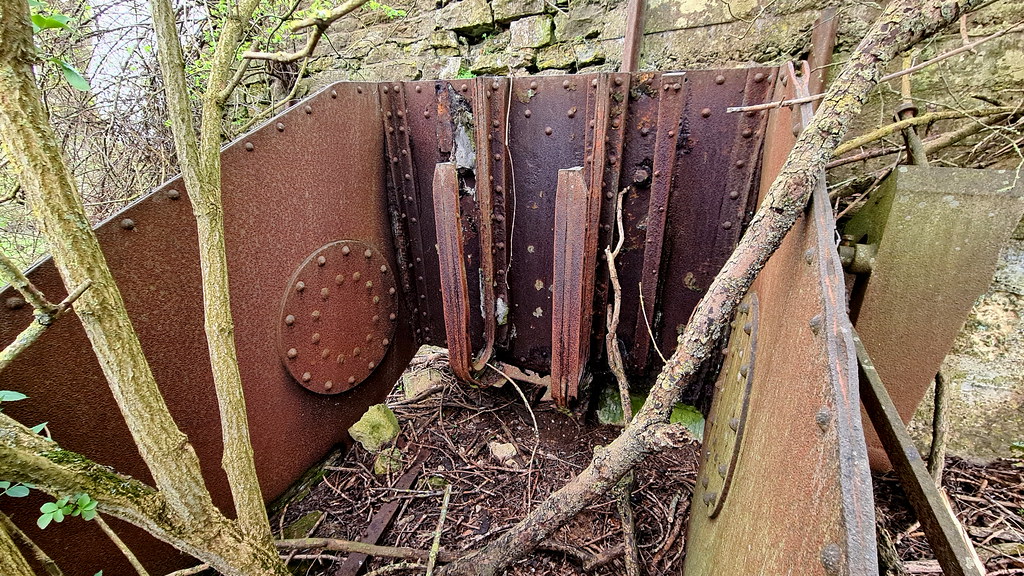 Easton 16 by HughieDW, on Flickr
Easton 16 by HughieDW, on Flickr
Close-up of the tipping mechanism:
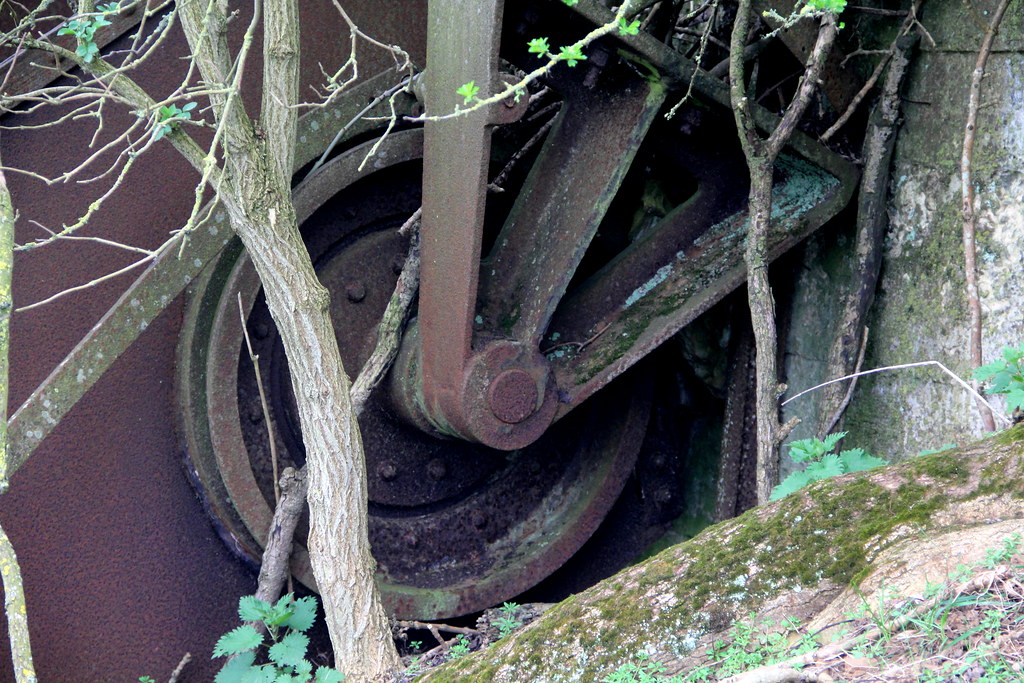 img0267 by HughieDW, on Flickr
img0267 by HughieDW, on Flickr
Looking due south up the incline:
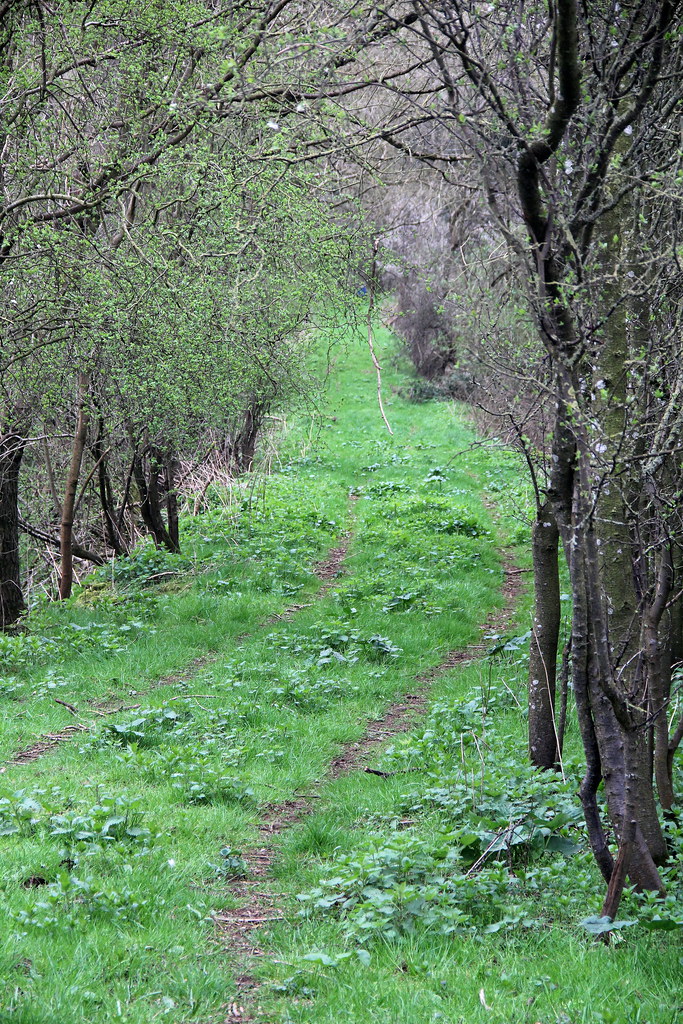 img0264 by HughieDW, on Flickr
img0264 by HughieDW, on Flickr
Looking down from the end platform into the hoppers:
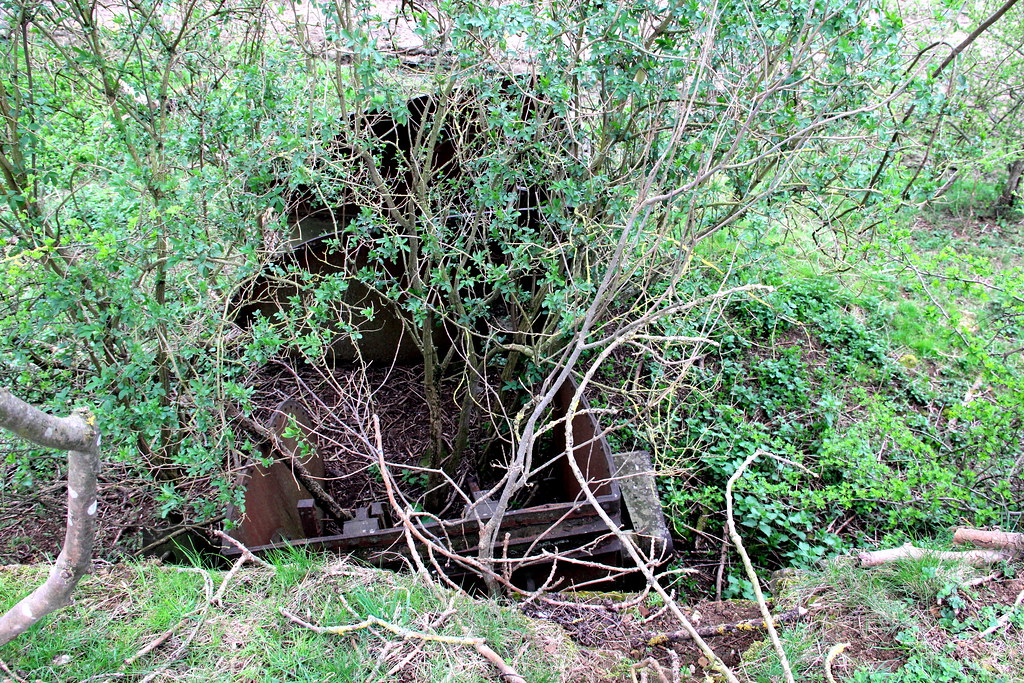 img0265 by HughieDW, on Flickr
img0265 by HughieDW, on Flickr
A length of old rail poking out the ground:
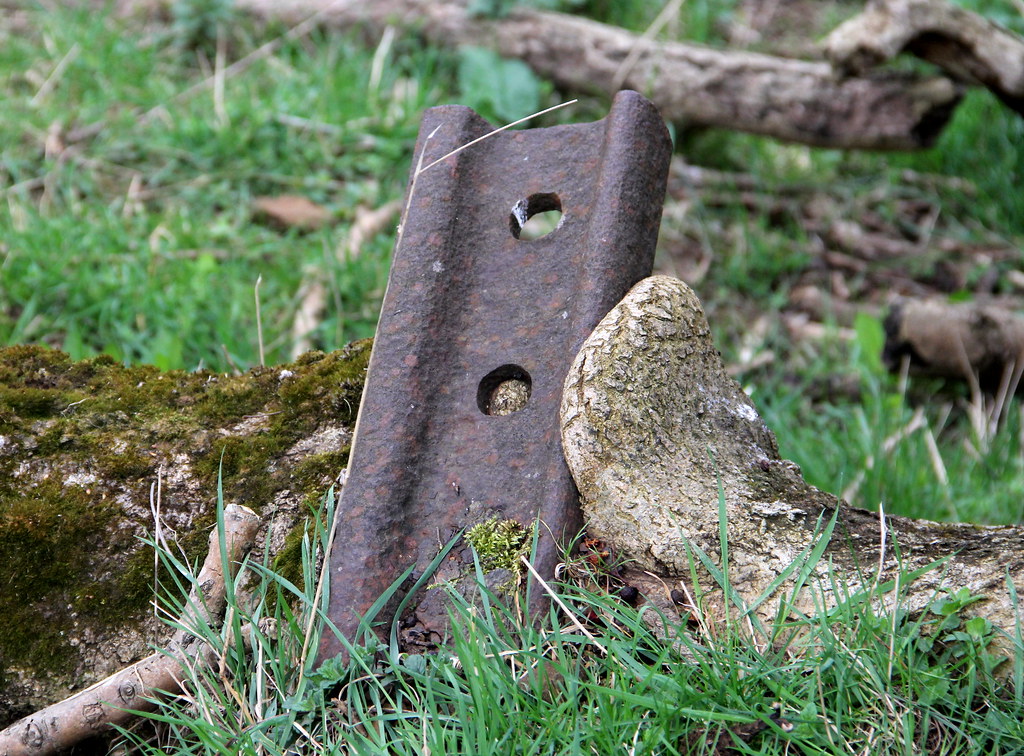 img0266 by HughieDW, on Flickr
img0266 by HughieDW, on Flickr
And finally, what I think is the remains of an old weighbridge:
 Easton 18 by HughieDW, on Flickr
Easton 18 by HughieDW, on Flickr
Easton on the Hill is a village situated at the north eastern tip of North Northamptonshire. The ironstone quarry, due north of the village, started up in 1873 under the ownership of the Chesterfield-based company, Wingerworth Iron co. The quarry was then re-worked by R.Eldred and Son in 1892, and the Marquess of Exeter in 1902. From 1913, it was subsequently operated by North Lincolnshire Iron Co Ltd (active from 1907-1983) until its closure in 1922.
As the quarry grew in size, it became a large local employer. A steam engine on 3ft gauge track was employed to move the stone around the quarry itself. The stone was then transferred to a 1-in-13 self-acting rope-worked incline that headed due north down to the ‘Tippler’ located just south of the main railway line operated by Midland Railways between Stamford and Oakham. The ironstone then continued its onward journey via rail so the stone could be smelted for iron. Apparently, the last quarry loco on the site was an 0-4-0ST built by Hudswell Clarke (Wks No 1106 of 1915) named UTHIE.
Today the quarry has been landscaped but relics from the incline railway remain. At the quarry end, a single-track engine shed and the 5ft 8in Diameter Horizontal winding drum with brake mechanism and operating/control wheel remain. The brick-lined cutting can also be traced into the overgrown cutting just south of the engine shed. At the bottom end of the incline, the double hopper Tippler system is complete along with the remains of a small weighbridge. The route of the incline can be traced south for the duration of Home Wood, after which its course has been lost to the landscaped fields.
2. The Explore
Nice related explore this. First reported by @BikinGlynn last year. Nothing spectacular but something of interest to the industrial archaeologists. The engine shed visible from the footpath to the east has its roof on, appears to have been converted to a chicken shed and isn’t that interesting. However, the winding drum and brake mechanism makes up for this. At the bottom end the Tippler system also makes the trip here worthwhile.
3. The Pictures
The single-track engine shed from the public footpath:
 img0268 by HughieDW, on Flickr
img0268 by HughieDW, on FlickrStructurally it isn’t looking too healthy!
 Easton 02 by HughieDW, on Flickr
Easton 02 by HughieDW, on FlickrAnd inside is pretty bare:
 Easton 01 by HughieDW, on Flickr
Easton 01 by HughieDW, on FlickrBut the winding drum is what were here for:
 Easton 03 by HughieDW, on Flickr
Easton 03 by HughieDW, on FlickrBuilt on a concrete base:
 Easton 04 by HughieDW, on Flickr
Easton 04 by HughieDW, on FlickrIt’s got the brake wheel:
 Easton 10 by HughieDW, on Flickr
Easton 10 by HughieDW, on FlickrAnd pretty much everything else intact:
 Easton 11 by HughieDW, on Flickr
Easton 11 by HughieDW, on Flickr Easton 09 by HughieDW, on Flickr
Easton 09 by HughieDW, on FlickrA couple of pictures of the stone-lined cutting that led up to the quarry:
 Easton 05 by HughieDW, on Flickr
Easton 05 by HughieDW, on Flickr Easton 06 by HughieDW, on Flickr
Easton 06 by HughieDW, on FlickrIt’s then back on to the footpath, further on down the hill and across to the Tippler system:
 Easton 20 by HughieDW, on Flickr
Easton 20 by HughieDW, on Flickr Easton 14 by HughieDW, on Flickr
Easton 14 by HughieDW, on Flickr Easton 17 by HughieDW, on Flickr
Easton 17 by HughieDW, on FlickrInside one of the double hoppers:
 Easton 16 by HughieDW, on Flickr
Easton 16 by HughieDW, on FlickrClose-up of the tipping mechanism:
 img0267 by HughieDW, on Flickr
img0267 by HughieDW, on FlickrLooking due south up the incline:
 img0264 by HughieDW, on Flickr
img0264 by HughieDW, on FlickrLooking down from the end platform into the hoppers:
 img0265 by HughieDW, on Flickr
img0265 by HughieDW, on FlickrA length of old rail poking out the ground:
 img0266 by HughieDW, on Flickr
img0266 by HughieDW, on FlickrAnd finally, what I think is the remains of an old weighbridge:
 Easton 18 by HughieDW, on Flickr
Easton 18 by HughieDW, on Flickr


